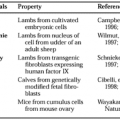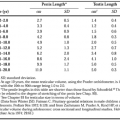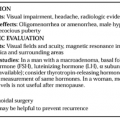OTHER OSTEOLYTIC SYNDROMES
Part of “CHAPTER 64 – OSTEOPOROSIS“
A number of rare syndromes can lead to some degree of bone lysis. These osteolytic syndromes can result from infectious, neoplastic, traumatic, metabolic, vascular, congenital, and genetic causes. Hyperparathyroidism and Paget disease can cause significant osteolysis as well.
The most common form of secondary osteoporosis is cortico-steroid-induced osteoporosis262; however, many other drugs, other endocrinopathies, and genetic diseases produce osteoporotic-like syndromes in which bone mass is reduced sufficiently to increase the risk of fracture. Frequently, secondary forms of osteoporosis coexist with the primary form of the disease. Recognition of the secondary form is important because treatment of the primary condition or elimination of the drug providing the insult to the skeleton can improve the patient’s outcome.
CORTICOSTEROID-INDUCED OSTEOPOROSIS
Corticosteroid-induced osteoporosis is the most common form of secondary osteoporosis. It may also be the presenting sign of Cushing syndrome. In such situations, the clinical onset may be heralded by a cluster of vertebral and rib fractures. Usually, the patient has overt signs of Cushing syndrome. The more common form of corticosteroid-induced osteoporosis occurs in individuals who require long-term pharmacologic doses of steroid.263 The higher incidence in women of rheumatic diseases that may require corticosteroid therapy (e.g., rheumatoid arthritis, systemic
lupus erythematosus [SLE], temporal arteritis, multiple sclerosis), coupled with the relatively compromised skeletal status of the aging female, explains why corticosteroid-induced osteoporosis is more common among women. Nonetheless, corticosteroid-induced osteoporosis can occur in both sexes and in connection with any disorder (e.g., chronic lung disease requiring long-term corticosteroid therapy).
lupus erythematosus [SLE], temporal arteritis, multiple sclerosis), coupled with the relatively compromised skeletal status of the aging female, explains why corticosteroid-induced osteoporosis is more common among women. Nonetheless, corticosteroid-induced osteoporosis can occur in both sexes and in connection with any disorder (e.g., chronic lung disease requiring long-term corticosteroid therapy).
Prospective studies have revealed that bone loss can be rapid, with significant loss occurring within the first 3 to 6 months of therapy. Surprisingly, however, in some individuals bone loss does not occur, even on very high dosages of cortico-steroid. In other individuals, bone mass may be lost on prednisone regimens as low as 5 mg per day. Bone loss also occurs in patients with Addison disease on standard corticosteroid-replacement therapy. Corticosteroid-induced bone loss occurs throughout the skeleton but is generally greater in trabecular than in cortical bone. One-third or more of corticosteroid-treated patients have vertebral fractures, and the risk of hip fracture is 50% greater than in controls.
Glucocorticoid excess causes bone loss by several mechanisms. These drugs inhibit the synthesis of bone matrix by the osteoblast and slow down the recruitment of newer osteoblasts. Histomorphometric studies have shown decreased mineral apposition and decreased width of trabecular packets. Osteocalcin levels in the blood are reduced within 1 day of initiation of glucocorticoid therapy and generally remain suppressed for as long as the therapy continues.264 In addition, bone resorption may be increased. Secondary hyperparathyroidism may be present, for which several potential causes exist: (a) glucocorticoids reduce the efficiency of calcium absorption by a direct effect on the intestinal cells, (b) glucocorticoids may increase obligatory urinary calcium loss, and (c) density of the 1,25(OH)2D receptor in the cell may be reduced. The compensatory secondary hyperparathyroidism that follows is thought to be responsible for accelerating bone loss. In addition, glucocorticoid therapy may reduce circulating levels of estradiol or testosterone through inhibitory effects on the adrenal gland and perhaps also direct effects on the ovary and intestine, exacerbating sex hormone deficiency.
The principles of treatment for glucocorticoid-induced osteoporosis are similar to those for postmenopausal osteoporosis. Limitation of dosage and duration of corticosteroid therapy are important. Alternate-day regimens may be beneficial. Patients on corticosteroids should receive calcium supplementation (1.2 g per day) and vitamin D (800 U per day). Physical activity should be encouraged, if possible, because the adverse effects of immobilization may exacerbate the situation. Whether administration of calcitriol is beneficial remains inconclusive.265 Controlled clinical trials have demonstrated preservation of bone mass using bisphosphonate therapy. Furthermore, two separate clinical trials (one using daily doses of alendronate and the other, intermittent cyclical therapy with etidronate) showed a decreased risk of vertebral compression deformity in postmenopausal women. Risedronate also increases bone mass and reduces vertebral fracture occurence in women with steroid-induced osteoporosis. HRT therapy may be appropriate for postmenopausal women, provided it is not contraindicated by the primary diagnosis (e.g., SLE).
Patients with corticosteroid-induced osteoporosis perhaps might benefit most from use of an anabolic agent capable of stimulating osteoblast synthesis of new bone. Controlled clinical trials of PTH therapy demonstrated marked increments in bone mass in patients with a variety of rheumatologic disorders who were on baseline treatment with HRT. However, PTH is not currently marketed for use in the United States.
PRIMARY HYPERPARATHYROIDISM
Although the classic bone disease of primary hyperparathyroidism is osteitis fibrosa cystica, generalized skeletal demineralization without osteitis may be seen. Bone densitometry has uncovered a higher prevalence of subclinical skeletal involvement, usually a preferential loss of cortical bone, in patients with primary hyperparathyroidism151 (see Chap. 58). Indeed, spinal BMD might be specifically preserved in mild forms of the disorder.
HYPERTHYROIDISM
Hyperthyroidism consistently increases bone turnover, and mild hypercalcemia occurs in ˜10% of cases. Both bone formation and resorption are usually increased. A mild and prolonged hyperthyroid state may aggravate an underlying process of bone loss, and the correction of hyperthyroidism may lead to some restoration of bone mass. Hypothyroidism is prevalent in the elderly, and overreplacement with thyroid hormone may accelerate bone loss and uncover clinical osteoporosis.266 Because the daily requirements for thyroid hormone may decrease with age, a periodic reassessment of the replacement dose is appropriate in this age group.
Stay updated, free articles. Join our Telegram channel

Full access? Get Clinical Tree






